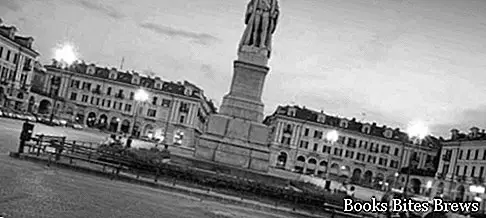What to see in Cuneo, itinerary of the historic center including the main monuments and places of interest, including the Cathedral, Piazza Galimberti, the Resistance Park, the Church of Santa Croce, the Church of San Francesco, the Church of Santa Chiara, the civic museum and the Sanctuary of the Angeli.
Tourist information
Located on a plateau shaped like a wedge, this Piedmont city is located between the Stura di Demonte and the Gesso stream.
The origins of Cuneo date back to the end of the twelfth century, the era in which the first housing nucleus arose, which was destroyed in 1210 by the Marquis of Saluzzo and immediately rebuilt.
From 1259 it was subjected to the Angevin dominion while, from 1382, to the Savoy dominion.
In the sixteenth century it was occupied several times, due to its particular strategic position.
The city also made a significant contribution to the war of resistance.
In via Roma, located in the historic center and characterized by low, partially pointed arches, the church of Sant'Ambrogio is located, characterized by a remarkable interior in Baroque style and a Greek cross plan.
This cult building, which was erected by Francesco Gallo during the first half of the eighteenth century, has a facade built by Carlo Ponzo.
Continuing on, one encounters the medieval town tower and the seventeenth-century town hall, with an eighteenth-century facade.
On the rear side of the building is the seventeenth-century church of Santa Maria, of which the original apsidal structure was transformed with works carried out in 1726.
What see
The church of San Francesco, built in Gothic style in 1200, has a rich portal from 1481, as well as a bell tower with an octagonal spire and built in 1399.
Recommended readings- Alessandria (Piedmont): what to see in 1 day
- Langhe (Piedmont): what to see among castles, villages and vines
- Piedmont: Sunday day trips
- Oropa (Piedmont): what to see
- Cherasco (Piedmont): what to see
Near San Francesco there is the magnificent church of Santa Croce, built between 1709 and 1715 following the design of F. Gallo, also the author of the sumptuous internal decoration, the concave-shaped facade and the double ellipse plan are the work of Antonio Bertola.
The civic museum, located in the eighteenth-century Audifreddi palace, which also contains the civic library and the municipal archive, preserves prehistoric and Roman artifacts, as well as materials and works of art relating to the historical, cultural and artistic events of the area.
Very beautiful is the church of Santa Chiara, characterized by a two-order curved facade made by F. Gallo and an interior containing frescoes by Giovanni Carlo Alberti, executed between the seventeenth and eighteenth centuries, depicting scenes taken from the life of the Saint of Assisi.
The Cathedral, built in the second half of the seventeenth century above the remains of a previous medieval church, has a nineteenth-century facade and an interior that preserves a painting made by a pupil of Caravaggio and depicting San Giobbe.
At the end of via Roma there is a very large square, built in the nineteenth century and dedicated to Duccio Galimerti, local hero during the Resistance.
It is worth visiting the Resistance Park, where the monument to resistance stands out, a work created by the sculptor Umberto Mastroianni in 1969.
Not far away is the Sanctuary of Santa Maria degli Angeli, a fifteenth-century building reworked in the eighteenth century, where Duccio Galimberti's tomb is located.




